Tat Lo, Laos — Life at the Right Speed
Waterfalls, village life, Lipstick the dog, and a ride to the monks’ falls.
Day One
🇱🇦 Tatlo (Bolaven Plateau)
After days on the backpacker circuit, I finally dropped off the radar — no internet, no phone signal, and during daylight hours, not even electricity. And to be honest, it felt good.
Leaving Vang Vieng, I spent one night in Vientiane, where I somehow ate the best sushi of my life. That was the highlight of the capital. The next morning, my Austrian friend Elli and I caught what was optimistically called a “VIP sleeper bus” to Pakse. We arrived before dawn, wandered around long enough to conclude there wasn’t much to linger for, and by mid-morning had boarded a local bus bound for a tiny village called Tatlo, high on the Bolaven Plateau. The brochure promised waterfalls and coffee plantations. It sounded like a dream.
After my previous Christmas Eve ordeal with a “local bus,” I hesitated, but you know the saying: fall off the horse, get back on. This one wasn’t too bad, apart from the child opposite me who threw up for most of the trip. About ninety minutes later, the bus stopped in the middle of nowhere. The bus lady called out “Ta-lo! Ta-lo!” That was apparently our stop.
We stepped out into the heat and dust — a single shop selling corn, a few motorbikes, and the faint smell of coffee pulp drying in the sun. Down the road, a wooden sign read Tadlo →. After a brief conference about whether Tadlo and Tatlo were the same place, we decided to take our chances.
It was a slow two-kilometre walk, made slower by the number of animals along the track — baby pigs, dogs, calves, and chickens all wandering free. Travelling with a woman who loved baby animals meant every encounter required a stop. The children were along the way were fascinated by us — running up, touching our arms, laughing at our pale skin.
The essence of Tadlo revealed itself immediately: life unfolding in simple harmony. People and animals shared the same space without hurry or suspicion. An old woman chatted softly to her pregnant pig. Houses were open, doors unlatched, trust implicit. Coupled with the Buddhist rhythm of “don’t stress, be happy,” the place radiated peace.
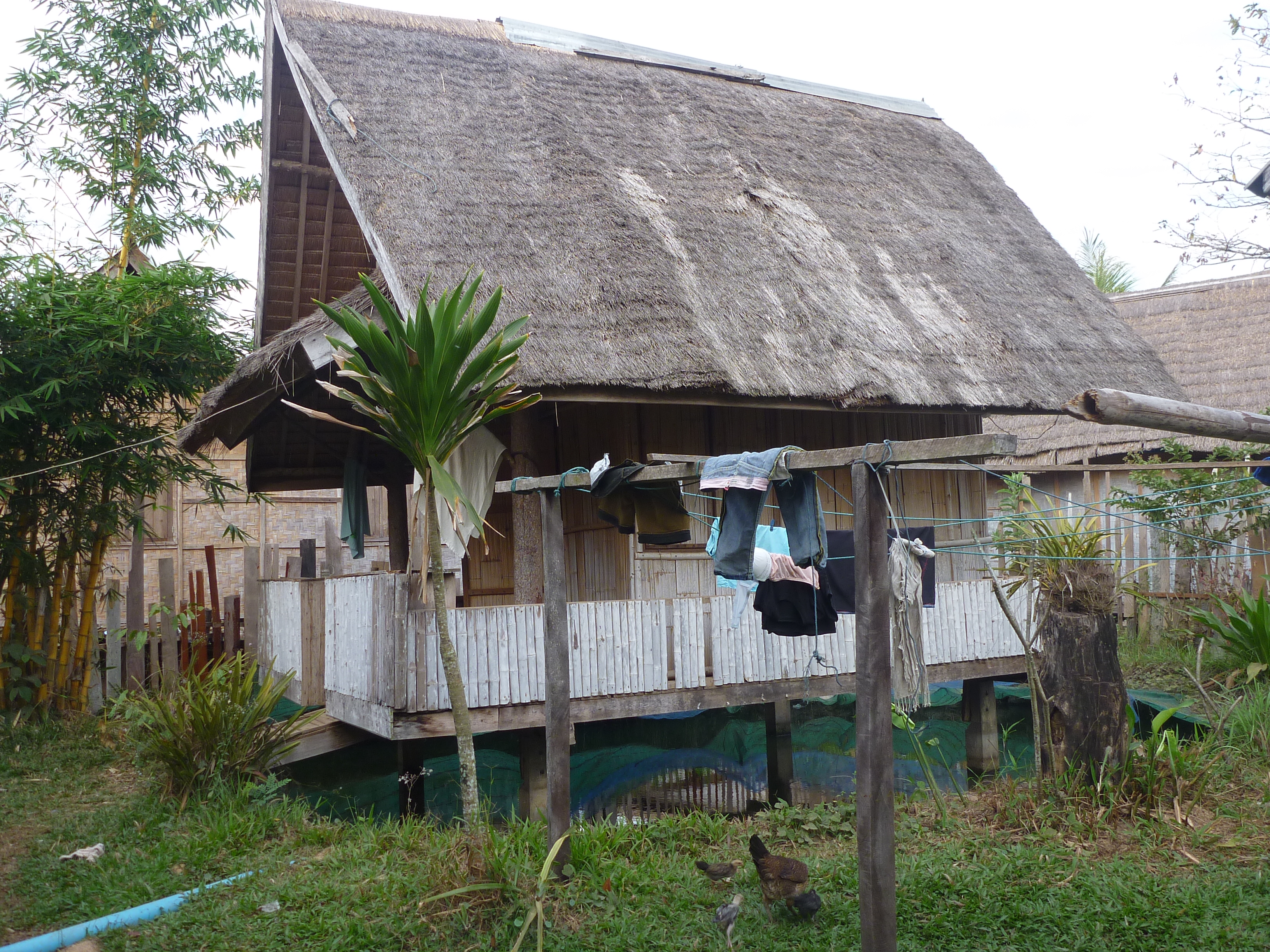
Just as the light began to fade, we found a hand-painted sign for Tim’s Guesthouse. We took a look to find a bamboo bungalow stood on stilts over a big pond full of fish like a little moated hut. Four dollars a night for the two of us. We didn’t hesitate.
That evening we met two young German teachers, Marta and Lea, who were staying next door. They brought a bottle of Lao rice whisky to share on our veranda. The air buzzed with frogs and distant laughter as we clinked plastic cups and made plans to trek to the waterfalls the next day.


Day Two — Waterfalls and River Kids
We woke to roosters and frying garlic. Breakfast was bananas and sticky rice. Within ten minutes on the trail we found two elephants grazing quietly by the river. Further along, local kids were fishing with homemade spearguns and bamboo nets. It was the weekend, and these little hunters — some no older than five — caught tiny fish, lit fires on the rocks, and cooked their catch right there by the water.
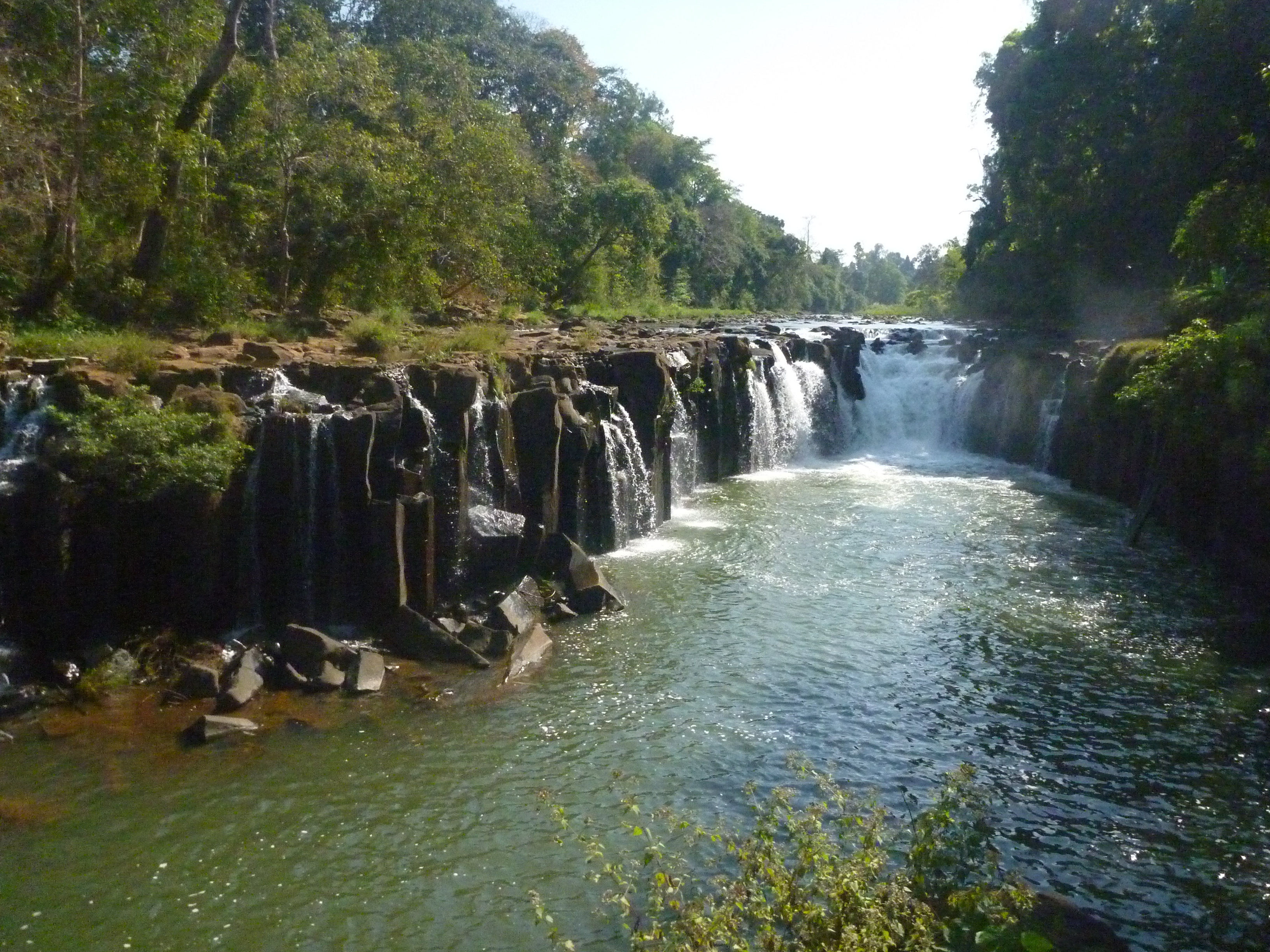
We swam beneath the first falls, then the second, the current tugging at our legs. The jungle smelled of wet earth and coffee flowers. It wasn’t a day of big adventure — just one of those slow, golden days when you feel perfectly suspended between nowhere and nothing urgent.
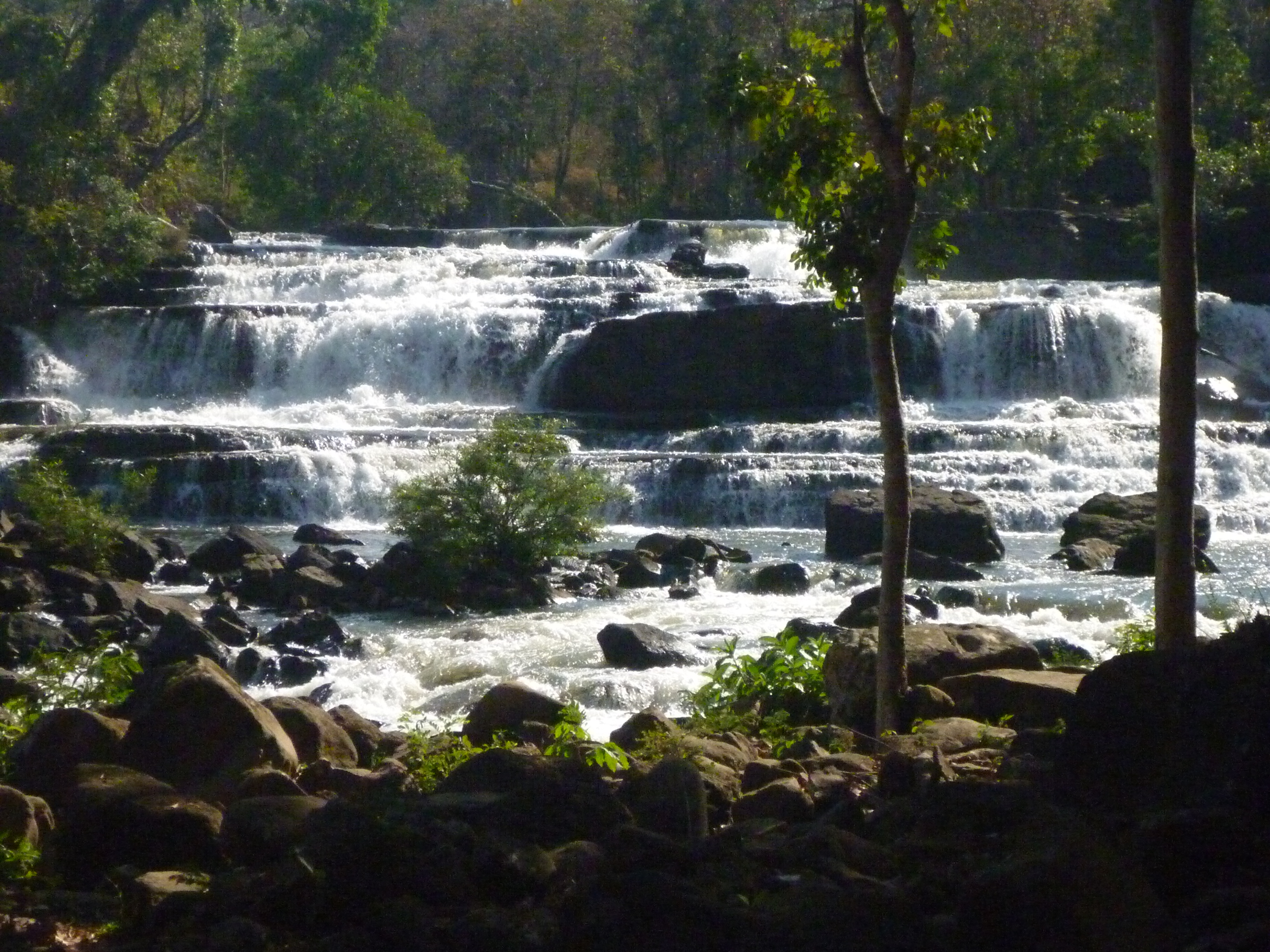
Day Three — Sit, Ti, and Ilie
The morning began with a grin — quite literally, the grin of Lipstick, a local dog who’d adopted us and was sitting proudly outside our hut. Elli declared it a “book day,” which in traveller code means “anti-social day.” So I teamed up with the Germans instead.

We’d planned to hire scooters but decided instead to trek to the third waterfall. About an hour into the walk, we reached a village alive with shouting kids. Three boys approached us — two around ten years old, the third barely six — and before we could even agree, they’d appointed themselves our guides.

Their names were Sit, Ti, and Ilie. They led us through fields, across coffee plantations and rickety bridges, pausing often to wrestle or point out animals. Every time we passed another group of children, they puffed their chests proudly — the falangs were their guests today.
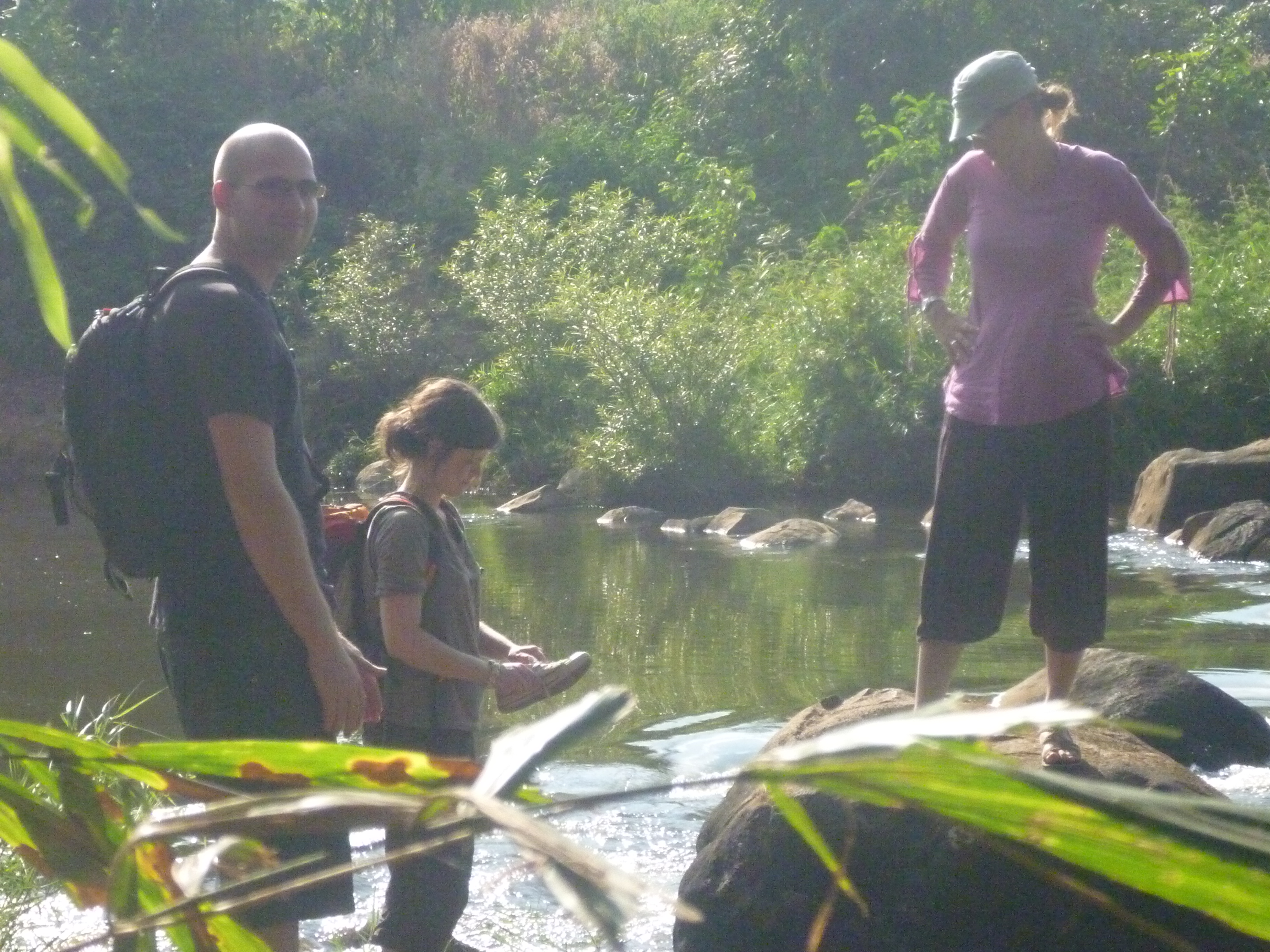
At a shady pool, the boys pulled out a plastic bag of sticky rice and papaya salad, insisting we join them. For a second I hesitated about hygiene, then surrendered. The food was bright, spicy, and delicious — proper local fare, eaten with fingers. We traded peanuts and biscuits from our packs, and they seemed thrilled.
At the waterfall, they showed us how to write animal names in the sand and corrected our hopeless pronunciations. Then came the inevitable request for money. I’ve always hated giving kids money — it trains them to see foreigners as walking wallets. They sulked when we said no, but their frowns vanished when we handed each of them a cold Pepsi from a roadside stall on the way back. Fair trade.
That night we ate by the river — yellow curry, laap (minced beef with mint and coriander), and pad Lao (fried noodles). The stars were so clear you could almost hear them.
Day Four — Scooters and Monks
I woke early, with Lipstick curled at my feet and the smell of wood smoke drifting in. Today would be a big one. Mission one: tell Elli to be up by 9:30. Mission two: breakfast with Marta and Lea. Mission three: visit the local school to see if we could help.
The teacher didn’t speak a word of English, so mostly we watched — rows of barefoot kids reciting in sing-song rhythm while a rooster wandered through the doorway. It was humbling and quietly beautiful.
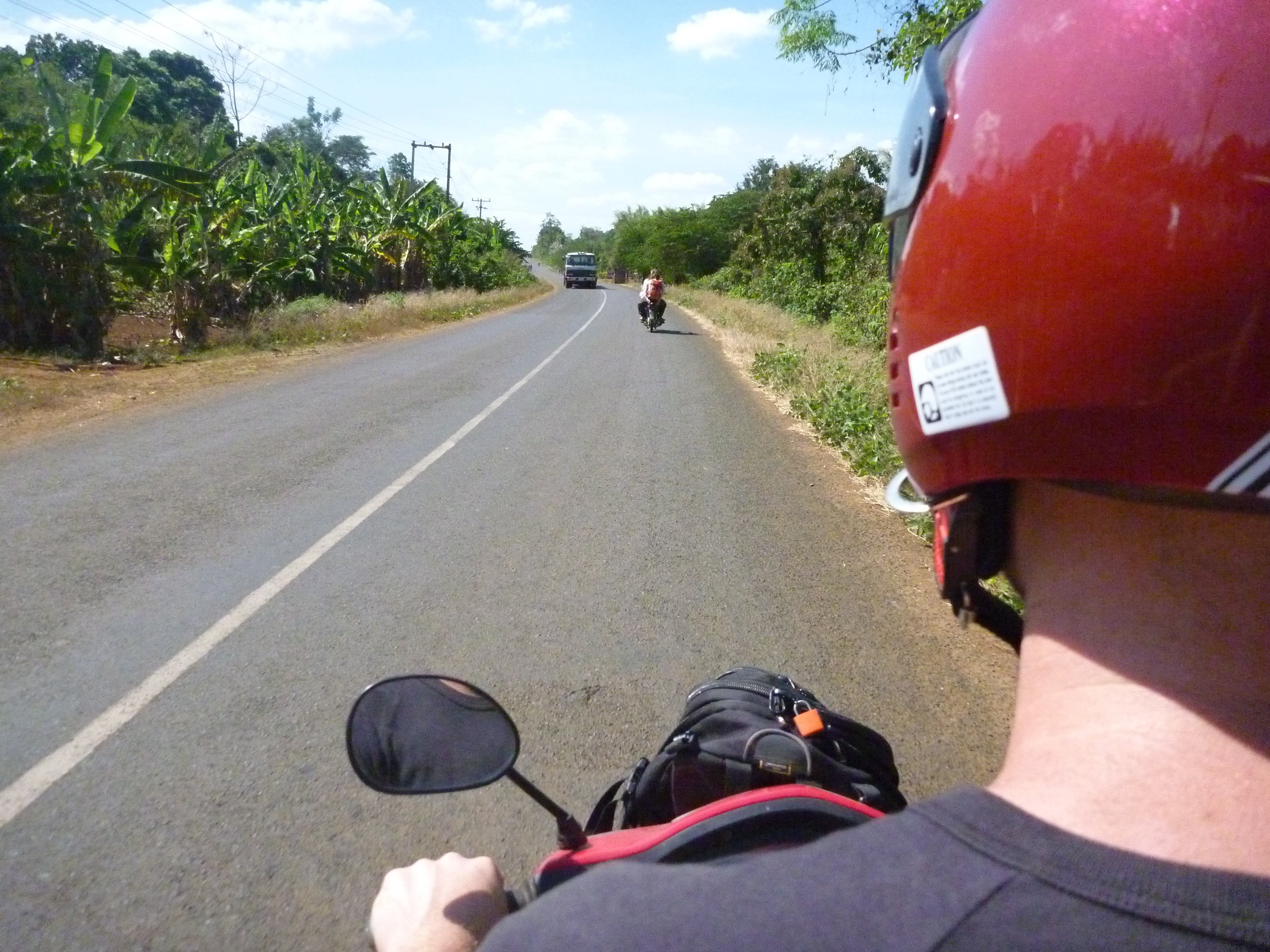
By late morning we’d hired two scooters. They were odd Lao-style bikes — manual gears, automatic clutch. Elli climbed on the back and we followed the Germans east through red-clay roads. At 60 kilometres an hour, wind in my face and a beautiful girl on the back, I thought: this is what freedom smells like — dust, oil, sunlight, and coffee beans.
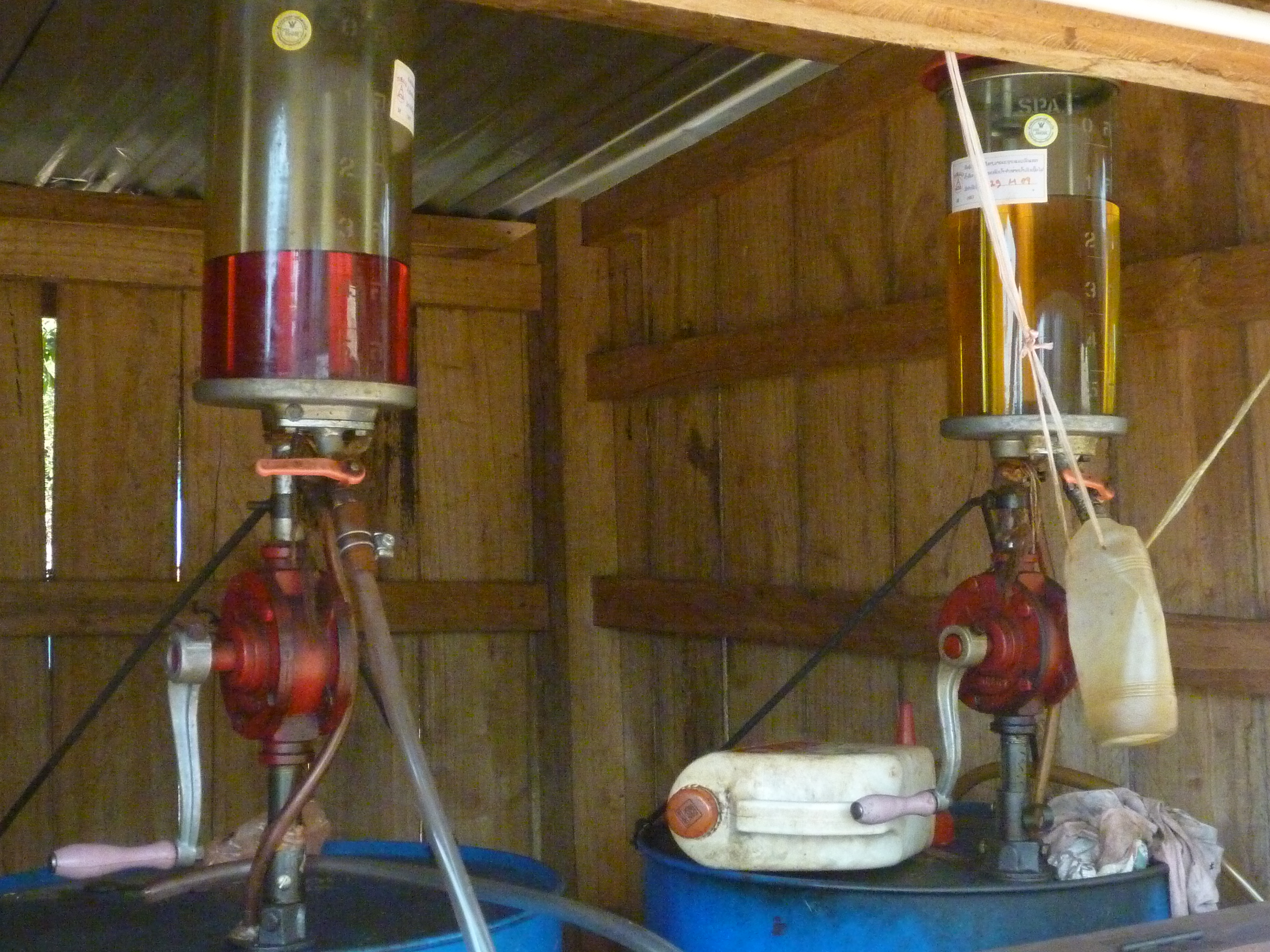
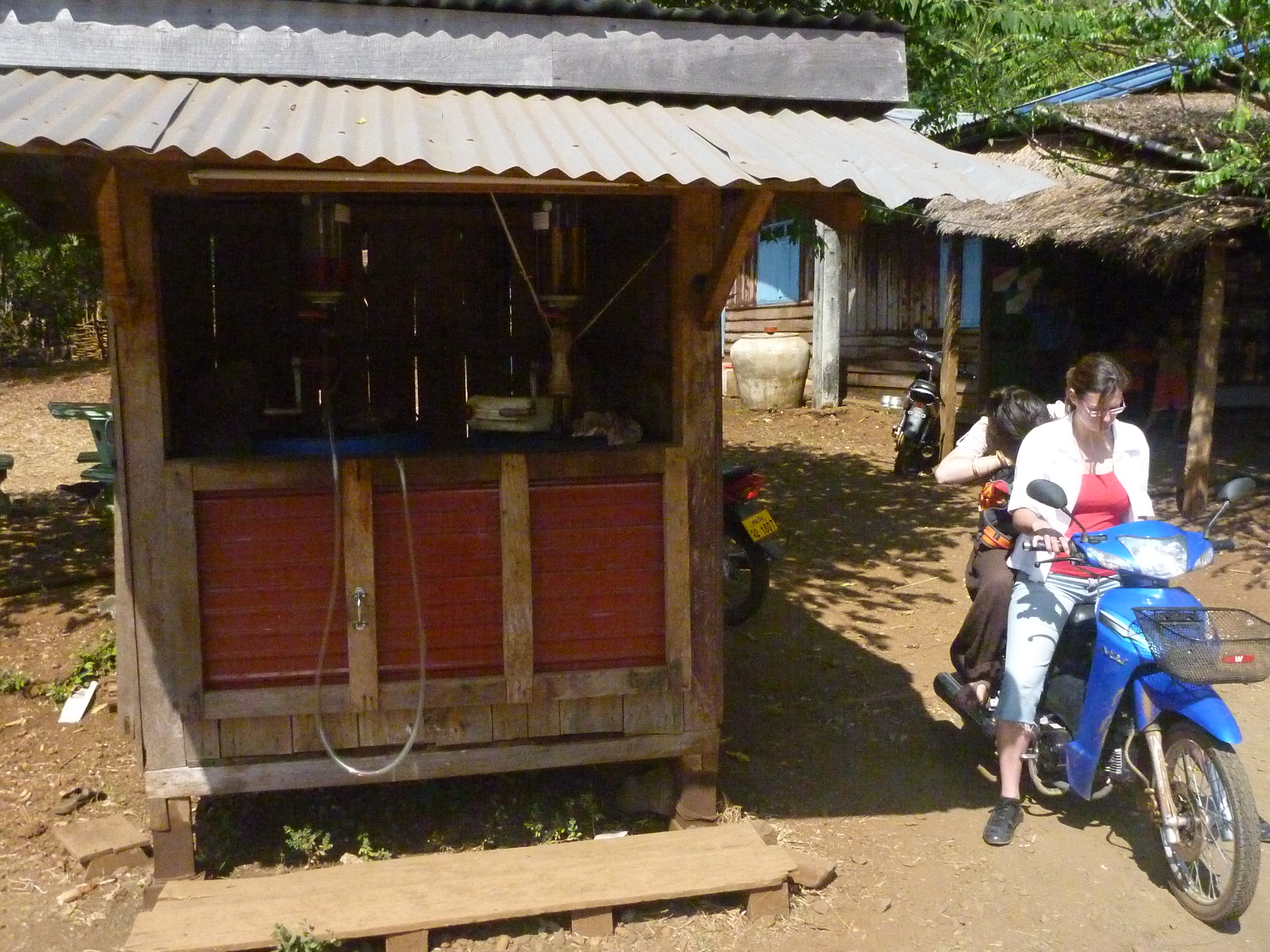
We were bound for a waterfall hidden near a monastery, said to be where monks went to meditate. We thought it was twenty kilometres away; it was sixty. But when we finally arrived, it was worth every bump — wide, calm, and powerful, with orange-robed intellectuals sitting in silence by the shallows.
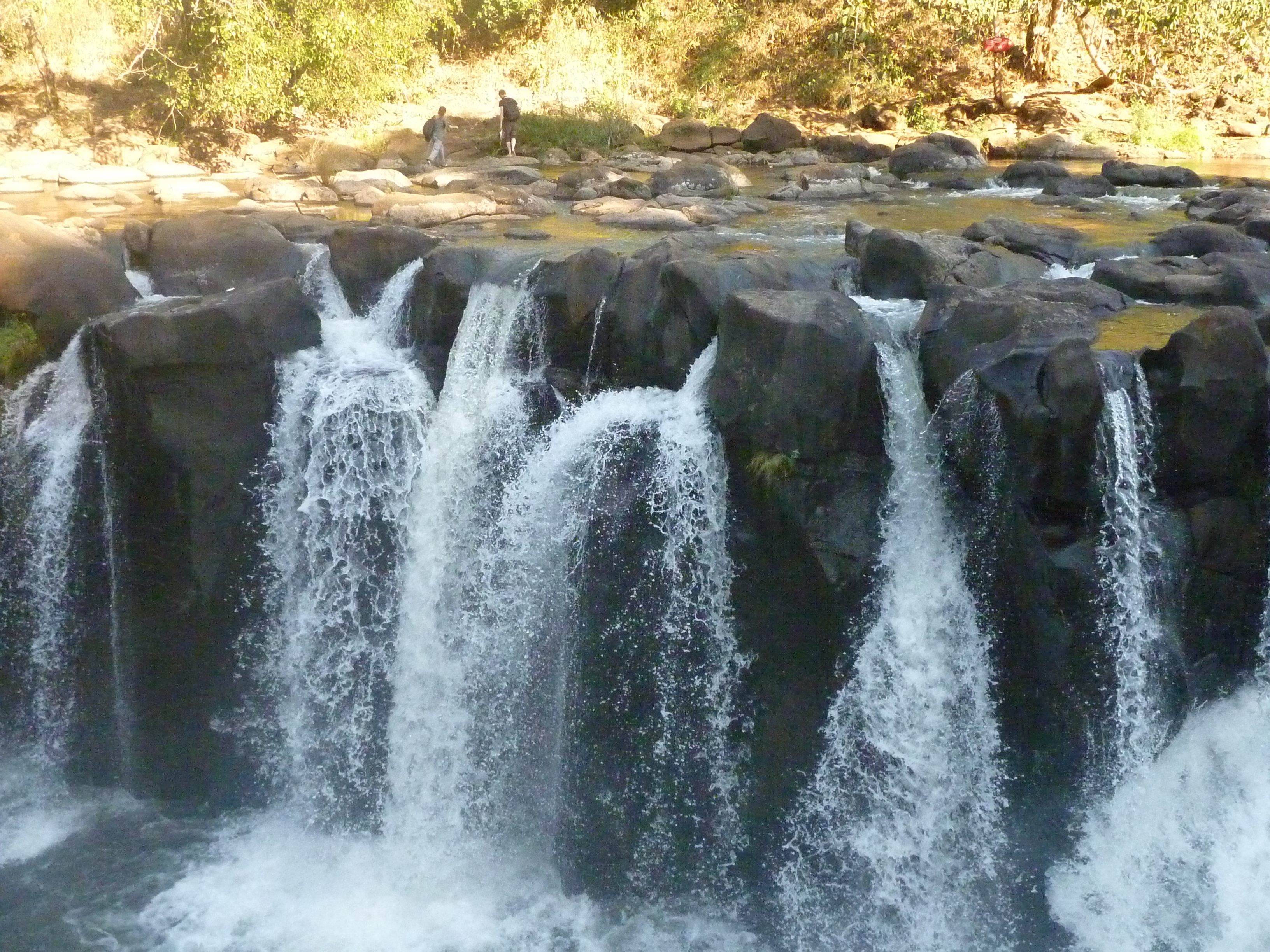
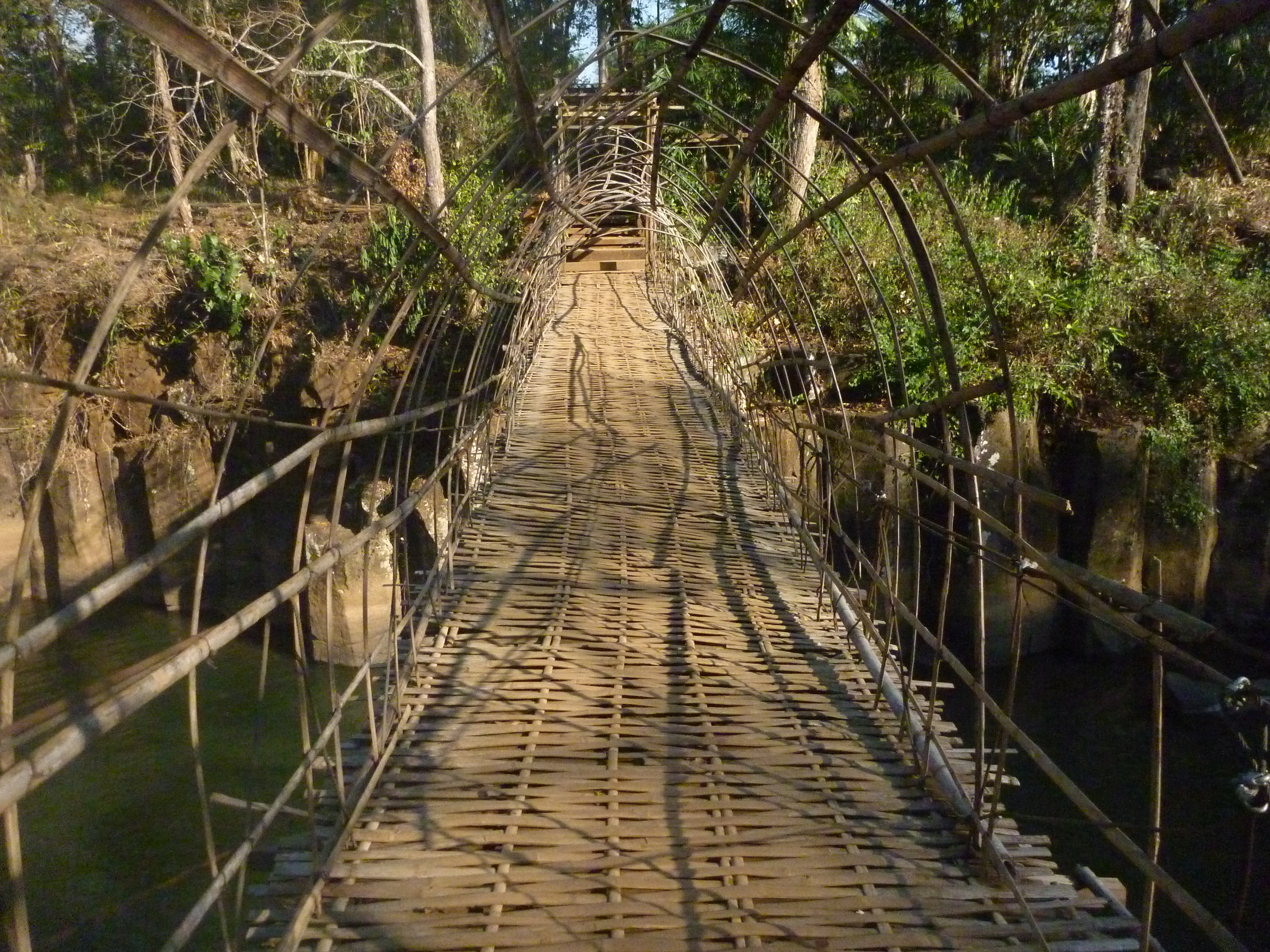
Lunch was fried vegetables and pineapple shake at a beautiful restaurant woven into the tree roots and branches. Elli ordered a whole fried fish — eyes, scales, guts, and all. When she couldn’t bring herself to eat it, I dissected it with chopsticks and salvaged the meat. She still thanks me for that.
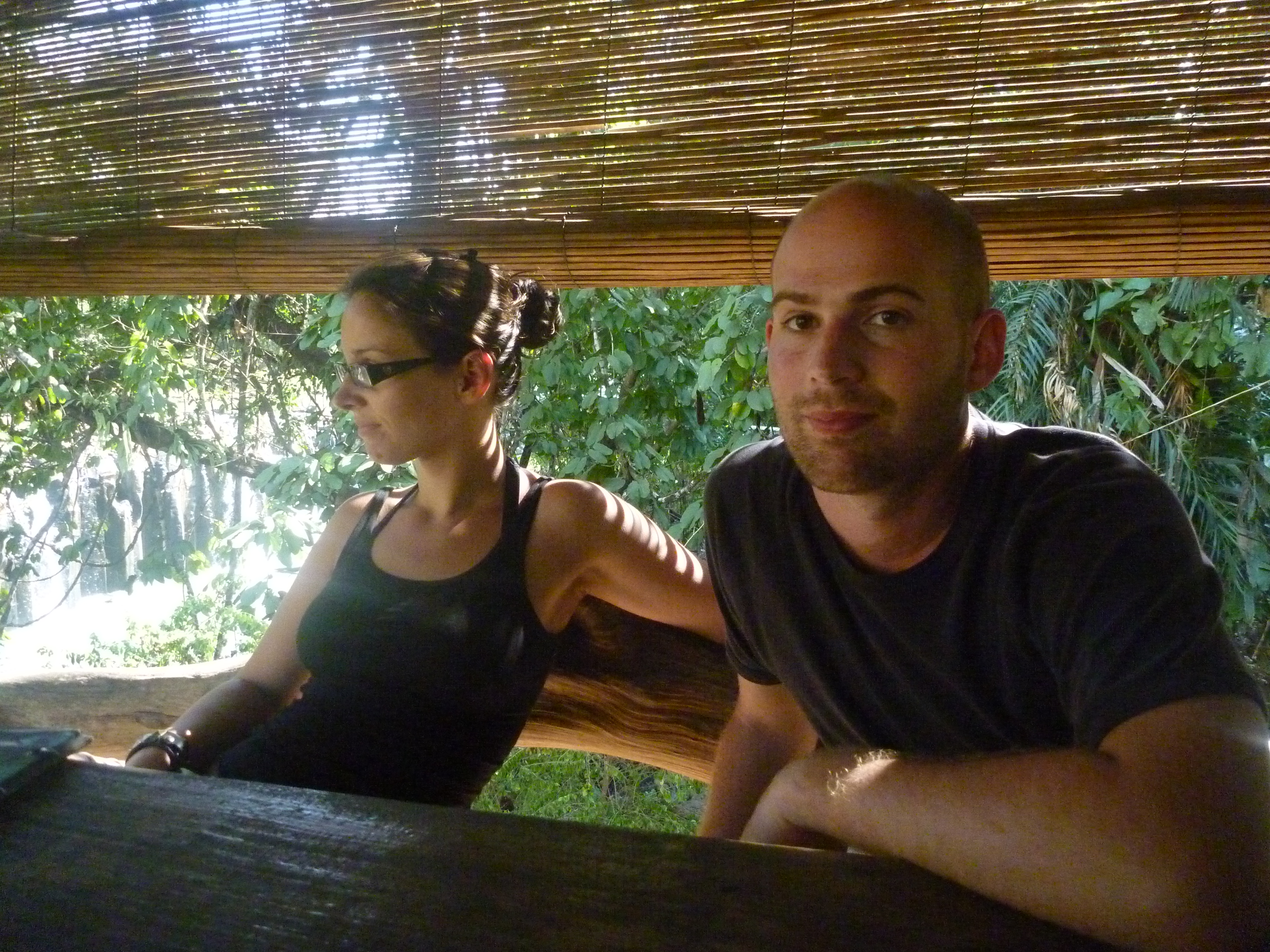


On the ride home, we passed the wreck of a truck that had missed a bend — a sober reminder of that Christmas Eve bus crash weeks earlier. We rolled back into Tatlo at dusk, 120 kilometres round trip, covered in dust but smiling.
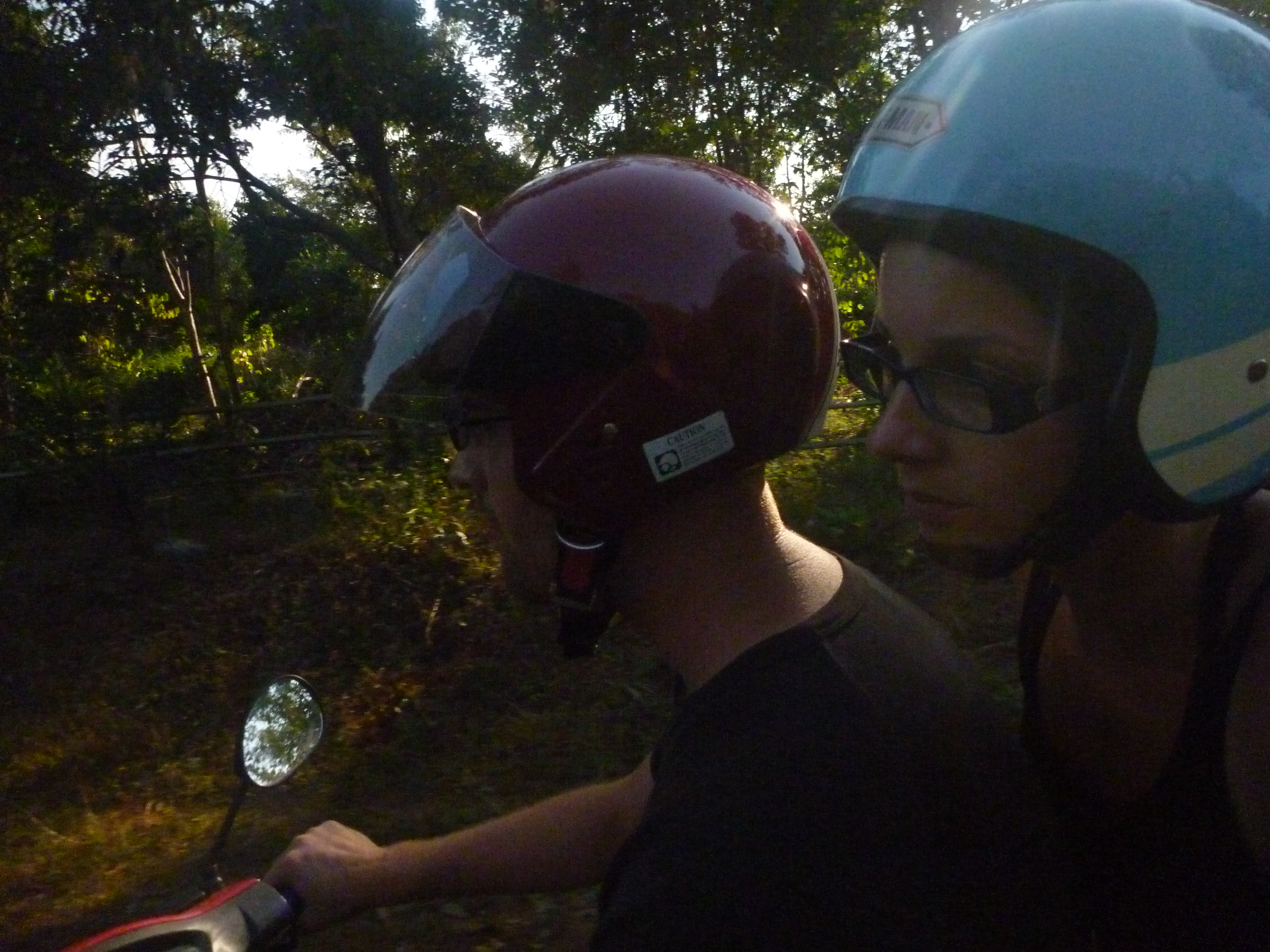
Dinner was simple, the night cool. The next morning we packed our bags and prepared to move on, but part of me wanted to stay longer — just to see if the pace of life might slow even more.


Reflections
Tatlo was one of those rare places that remind you why you travel. No nightlife, no Wi-Fi, no expectations — just waterfalls, rice whisky, hammocks, and laughter echoing off bamboo walls.
It wasn’t about seeing something spectacular. It was about belonging somewhere, if only for a moment.
🥗 Laap — Lao Minced Beef with Herbs
Tatlo Travel Recipe Edition
Some dishes don’t need measuring cups or rules — just sunshine, fresh herbs, and a squeeze of lime. Laap is one of those. We first had it sitting by the river in Tat Lo — bikes parked, shirts damp from waterfall spray, and the smell of charcoal and lemongrass drifting through the air. The locals tossed everything together in minutes, laughing the whole time, and somehow it came out perfect.
🌿 Ingredients (serves 2–3)
- 300 g minced beef (chicken or pork works fine too)
- 1–2 Tbsp toasted sticky-rice powder (or regular rice, dry-toasted and crushed)
- Juice of 1–2 limes
- 1 Tbsp fish sauce (add another splash if you like it saltier)
- 1 tsp sugar (optional)
- 2–3 small shallots, thinly sliced
- A big handful of fresh mint and coriander
- 1–2 small red chilies, finely sliced
- Sticky rice or crisp lettuce to serve
🔥 Method
- Cook the meat: Toss the mince into a dry pan over medium heat. Stir until just cooked through — no need for oil if the meat has a little fat.
- Mix the dressing: In a bowl, squeeze the lime juice, fish sauce, and sugar until it tastes balanced — tangy, salty, a touch sweet.
- Combine: Add the hot meat straight into the bowl. Sprinkle the toasted rice powder, then fold through the shallots, mint, coriander, and chili.
- Serve: Pile it into crisp lettuce leaves or alongside warm sticky rice. Eat it barefoot, preferably near a waterfall.
✨ Travel Notes
- The toasted rice powder adds a nutty crunch — easily made by pan-toasting a tablespoon of dry rice and crushing it roughly.
- Don’t overthink the measurements — Laap is about taste balance, not precision. Adjust as you go.
- Pair with a cold Beerlao and the hum of mopeds fading in the background.